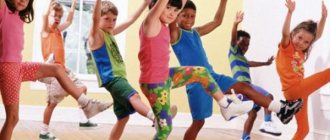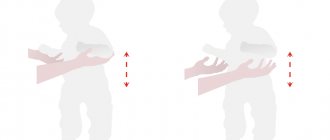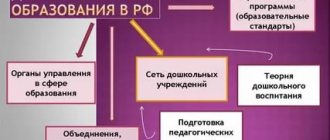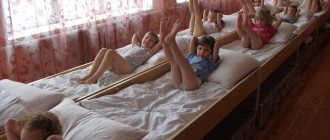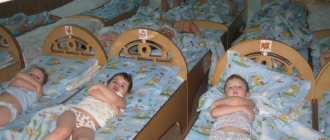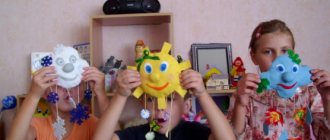| Kind of work: | Essay |
| Date added: | 21.01.2020 |
- This type of work is not a scientific work, it is not a finished final qualifying work!
- This type of work is a finished result of processing, structuring and formatting collected information intended for use as a source of material for independent preparation of educational work.
If you have a hard time understanding this topic, write to me on WhatsApp, we’ll look into your topic, agree on a deadline, and I’ll help you!
If you want to learn how to correctly carry out and write abstracts on any subject, then on the page “what is an abstract and how to do it” I wrote in detail.
Introduction
In modern society, a person experiences a whole range of unfavorable factors: emotional stress, information overload, poor environmental conditions. These factors are very often combined with insufficient physical activity. The combined impact of adverse environmental factors and a sedentary lifestyle has an extremely negative impact on the body, affects its normal functioning and contributes to the development of various diseases.
In such conditions, it is very important to use a number of different means to maintain and strengthen the health of the body. A healthy person is a full-fledged member of society, with a high level of physical and mental performance, good health and inner peace.
One of the activities that has a beneficial effect on the health of the body is morning exercises. In addition to the specific effect that facilitates the process of transition from a state of rest to a state of active wakefulness, performing morning exercises increases the level of general physical activity. For the majority of the urban population, morning exercises are often the only specially organized physical activity.
Like most effects on the body, morning exercises are useful only if they are used correctly, taking into account the peculiarities of the functioning of the body after sleep, as well as the individual characteristics of a particular person.
The main tasks that can be solved with the help of morning exercises:
- Eliminate some of the consequences of sleep (swelling, lethargy, drowsiness, etc.);
- Increase the tone of the nervous system;
- Strengthen the functioning of the body's main systems (cardiovascular, respiratory, endocrine and others).
- Solving these problems will allow you to smoothly and quickly improve the mental and physical performance of the body, preparing it to cope with the significant physical and mental stress that is often found in modern life.
As a result of competent performance of complex morning exercises, optimal excitability of the nervous system is created, heart function improves, blood circulation and breathing increase, which ensures increased delivery of nutrients and oxygen to cells.
After a good workout, you feel drowsiness, lethargy, weakness, increased mental and physical performance, activity, mood and well-being. Physical exercises of morning exercises to enhance lymphatic drainage, increase the circulation of interstitial fluid, and increase venous blood flow. This provides relief from congestion and swelling that often occurs during sleep, especially in middle-aged and elderly people.
Since performing any physical movements is accompanied by an increased release of heat, morning exercises lead to a moderate increase in body temperature. Within certain physiological limits, an increase in body temperature is a positive factor. An increase in temperature accelerates metabolic processes and increases the activity of all organs.
In particular, it increases the speed of transmission of nerve impulses, which, together with other changes, facilitates the processes of controlling various functions of the body by the nervous system, increases the speed and accuracy of reactions, coordination of movements, increases all types of sensitivity, and improves mental performance. Physical gymnastics
The most suitable exercises for morning exercises:
- Stretching exercises Various types of walking;
- General developmental exercises (bending, twisting, squatting, alignment, joint rotation, etc.);
- Stretching exercises (for flexibility);
- Dance moves;
- Light jogging and jumping;
- Breathing exercises.
Individual approach to choosing physical activity for morning exercises
Each organism is characterized by a number of specific features. No two organisms on earth are alike. Even in a multicellular organism, no two cells are alike—each is unique and different.
Therefore, in addition to the general principles of the morning exercise complex in its development, it is necessary to take into account the individual characteristics of the body.
When developing a morning exercise complex, the following main factors must be taken into account:
- State of health of the body
- General physical condition of the body
- Individual biological rhythms of the body
- Health status when choosing physical activity for morning exercises.
The state of health of the body should largely determine what exercises should be included in the morning exercise program, as well as the intensity and duration of their implementation. In some cases, morning exercises are contraindicated. However, as a rule, contraindications are temporary. As a rule, the presence and nature of a particular disease does not indicate the need to abandon morning exercises, but requires adjustment of the complex of means used.
Taking into account the physical fitness of the body when choosing physical activity for morning exercises:
A trained person is more physically active than an untrained person. This is due to the fact that the same load causes fewer physiological changes in a trained body than in an untrained body.
The training of a well-prepared person should be longer and include exercises of greater intensity than the training of an unprepared person.
As a well-trained individual, you can incorporate running and even strength exercises (pull-ups, push-ups, kettlebell exercises, etc.) into your workouts. However, excessive fatigue should be avoided. Even a trained person should not consider training as a means of developing endurance or strength.
Hygienic requirements for organizing morning exercises
Hygiene is the science of creating conditions for maintaining human health.
Clothing requirements:
- Clothing made from natural materials (for example, cotton fabrics) is preferable for morning exercises. Natural materials do not prevent the evaporation of sweat from the surface of the skin, and at the same time ensure the preservation of heat emitted by the body, which helps to warm it up after sleep.
- In addition, clothing for exercise should be loose, comfortable, lightweight and not restrict movement. It’s good if clothes for school meet not only hygienic, but also aesthetic requirements. Wearing nice clothes will make your workout more enjoyable and your mood will improve.
- If the course takes place outdoors, then the same requirements apply to shoes. When exercising indoors on a warm, clean floor, shoes should not be worn.
Room requirements:
- The practice room should be relatively spacious, well ventilated, clean and well lit.
- During the warm season, training can be done outdoors. In this case, the body experiences not only the consequences of physical exercise, but also natural factors - the sun, the air - which have a strengthening effect.
Healthy people who tolerate exercise well in the morning can do exercises in the fresh air not only in the warm season, but also in almost any weather. Outdoor training is especially convenient for people who have dogs at home - you can combine your pet's morning walk with hygienic exercises.
Requirements for musical accompaniment:
- It is better to do morning exercises to rhythmic, cheerful music.
- The volume of the music should not be too soft, but not too high, since too loud music causes the development of protective inhibition in the nervous system.
- Cheerful, rhythmic, joyful music enhances the tone of the nervous system, lifts the mood and makes you want to move. This makes waking up much easier and reduces lethargy after sleep.
- Avoid using music that contains disturbing, frightening sounds, because after sleep, when the body is in a sluggish state, it is extremely sensitive to such influences at the level of subconscious perception.
Morning exercises: basic rules and recommended exercises
There is another common misconception. Some people are sure that it is not necessary to do exercises in the morning. You can practice physical activity in the afternoon and even in the evening. If we are talking about morning exercises, then all experts agree on one thing: it should be done in the morning, after waking up. After all, the main goal of such gymnastics is to charge a person with vivacity and energy for the whole day.
5 important recommendations
To maximize the benefits of morning exercises, you must follow the following rules.
Duration of gymnastics
For those who are just starting to introduce morning exercises into their lives, it is recommended to plan 10-minute exercise. Over time, you can increase the time to 15 minutes. When the body fully adapts to the stress (after approximately 3-6 months), begin to increase the charging time to half an hour.
Preparing to charge
You should not start gymnastics immediately after getting out of bed. The body still continues to sleep. Such loads will cause discomfort. Initially, you need to cheer up a little. To do this, it is recommended to wash your face and brush your teeth.
Be sure to drink a glass of water. The fluid entering the body will thin the blood. Thanks to this, it will be possible to normalize the load on the heart and blood vessels. But you shouldn’t have a snack before exercise. Perform all exercises on an empty stomach.
Add emotions
Exercise should not only invigorate, but also improve your mood. Therefore, turn on your favorite music, saturate the air with aromatic oils (just don’t overdo it) and do gymnastics. After physical education, be sure to praise yourself, celebrate all your achievements and don’t forget about encouragement.
To ensure that charging brings significant benefits to the body, first ventilate the room. This can be done while you wash your face. The influx of fresh air will saturate the body with more oxygen.
Regularity of classes
If you do exercises from time to time, then you should not hope for positive results. Only daily exercise will bring benefits. Moreover, the first results will become noticeable after 5-6 weeks of regular training.
At this time, people usually note a decrease in stress levels, a positive attitude, and a decrease in excitability and irritability. Practitioners of morning exercises claim that by the 5-6th week, performance increases, discipline and perseverance increase. People become stronger and practically do not catch colds.
Difficult morning exercises
Morning Exercise Program No. 1
- Walk in place or move in place with outstretched arm movements, squeezing and releasing your fingers. Duration 1 minute.
- Standing, feet shoulder-width apart. Left arm up at your sides, right arm behind your back, stretch and stretch, inhale, return to the starting position, exhale. I repeat, changing the position of the hands. Average temp.
- While standing, raise your toes, extend your arms to the sides - inhale, then return to the starting position - exhale.
- Standing, legs to the sides, left hand up on the waist on the right side; spring fold to the right, repeat the same on the other side. Breathe evenly, at an average pace.
- Standing, throw your left leg back, swing your arms forward, arms relaxed - inhale; starting position - exhale; repeat the same with your right leg.
- Stand, stand on tiptoes, arms at your sides - inhale, lunge your right leg, bend forward, hands touch the floor - exhale, starting position - inhale, the same with the left leg. Speed is average.
Difficult morning exercise number 2.
- Walking with outstretched arms at an accelerated pace. Duration 1 minute.
- Stand with your feet opposite, fingers interlocked. Turn your palms outward, arms up, lift them onto your toes - inhale; straighten your arms, arms down to your sides, return to the starting position - exhale.
- Run (15-20 seconds) slowing down and starting to walk.
- Stand with your legs wide apart, hands on your waist. 1 - body rotation to the left, arms to the side; 2 - 3 - back bends; inhale; 4 — starting position; exhalation; 5 - 8 - the same when rotating to the right. Average temp.
- Lie on your back and stretch your arms to the side. Raise your right leg and then place it to the right until it touches the floor; Raise your leg, starting position. Do the same with your left leg and lower it to the left. Breathe evenly, slowly.
- The starting position is to kneel and then sit on your heels, leaning forward, palms on the floor. 1 - 3 - let the chest slide along the floor, arms first bend and then straighten, move to a resting position on the hips - inhale; 4 - bend your legs, quickly return to the starting position - exhale. Speed is slow.
Complex morning exercises No. 3.
- Standing, feet shoulder-width apart, hands on waist. Move your elbows back, inhale and relax as you exhale.
- Stand with your feet together and your arms down. With your feet out to the side, raise your arms to your shoulders, then return to the starting position. Speed is average.
- Stand with your feet shoulder-width apart, one hand up and the other down. Wave your arms one at a time.
- Stand up with your arms down. Raise your arms to the sides as you inhale and lower them as you exhale. The pace is average.
- Walk in place, raising your knees up, gradually speeding up and slowing down.
- Standing, legs to the sides, hands on the waist. Bend over (exhale) and reach for your fingers. Speed is average.
- Stand with your feet together and your arms bent in front of your chest. Snatch with arms bent for a two count and arms extended for a two count. The pace is average.
- Standing, feet together, arms down. Raise your arms alternately - inhale, lower - exhale. The pace is slow.
- Standing, feet shoulder-width apart, hands on waist. Three side bends of the body, return to the starting position. Speed is average.
- Standing, feet shoulder-width apart, arms down. Perform a springy half-squat with punches forward and backward with your arms. Average temp.
- Calm walking with relaxation (alternating handshakes, legs) for 15 - 20 seconds.
- When walking, alternately raise your arms up - inhale, down - exhale. Speed is slow.
Methodology for morning exercises
The importance of morning exercises
1.5 Methodology for morning exercises
In the process of morning exercises, it is necessary to ensure the correct physical, mental and emotional stress.
Physical activity increases gradually: having reached its highest value during jumping and running, it decreases towards the end of morning exercises. The motor density of morning exercises should be high, so minimal time is allocated for explaining and demonstrating exercises, distributing physical education equipment and changing lines. Physical activity increases by increasing the number of repetitions of each movement, the pace of their execution and reducing the interval between exercises. It also depends on the total duration of morning exercises: in the first junior group its duration is 4–5 minutes; in the second youngest – 5–6 minutes
Morning exercises use exercises familiar to children, so the mental load (on attention, memory) is almost always moderate.
Physical exercise has a more beneficial effect on the body when it evokes a cheerful mood and positive emotions. And the teacher, correctly alternating exercises and giving sufficient load, creates interest in children in morning exercises. It is equally important to carry out the exercises emotionally, using various techniques and musical accompaniment. However, exercise and music should not overstimulate children because this can lead to fatigue and decreased appetite.
At the beginning of the year, children of the first junior group are not lined up before performing exercises: they walk and run in a flock, scattered. In the future, morning exercises in this group also begin with formation in a column, one at a time or in one line.
To perform general developmental exercises, young children are lined up in a circle, scattered. With this structure, it is easier for the teacher to monitor the quality of general developmental exercises performed by all children and to pay attention to correct posture.
At the beginning of morning exercises, walking in place is often given (regular, with high knees). This helps organize children and focus their attention.
To prevent flat feet, it is advisable to give different types of walking in the following combination at the beginning and at the end of morning exercises: normal walking, on toes, heels, edges of the feet. This combination is repeated 6–8 times.
It is useful to change the walking speed - from slow to fast, from fast to slow
It is necessary to ensure that children do not shuffle their feet or sway when walking, keep their heads straight, swing their arms rhythmically, and breathe through their nose. The teacher prevents mistakes with appropriate instructions, and if they do occur, corrects them without stopping walking.
When walking with high knees, imitation is used (“horses”, “herons”, “walking in deep snow”).
Running during morning exercises in younger groups is first carried out in a flock, scattered, and then in a column one at a time, both in place and moving in different directions.
Before general developmental exercises, running is performed at an average pace and alternates with walking. After performing general developmental exercises, running is carried out at a faster pace to train the cardiovascular and respiratory systems.
The duration of running without a break gradually increases: for younger children it is 10–20 s, for middle age – 20–25 s, for older children – 25–30 s, for children 6 years old – 30–40 s (these norms can be changed depending on from the health, physical development, physical fitness of children). The teacher makes sure that indoors, on a playground with hard ground, children run on their toes, raising their knees higher.
Morning exercises include different types of jumps: jumping on one and two legs in place and moving in different directions (forward, backward, sideways, in a circle, etc.); jumping over objects (sticks, hoops, cubes); jumping into and out of a hoop. Jumping can alternate with half-squats, walking (for example, for 4-8 counts - jumping and for 4-8 counts - half-squats or walking); Such combinations are repeated 3-4 times. In younger groups, imitation (“bunnies”, “balls”) is used when jumping.
General developmental exercises for morning exercises are selected in the following sequence: first, exercises are given for the muscles of the arms and shoulder girdle, after which exercises that strengthen the muscles of the torso and legs are advisable.
At the end of the gymnastics, after running alternating with jumping and walking, exercises can be performed for the shoulder girdle and arms, which help calm the body.
The number of general developmental exercises and their dosage increase with the age of children, as physical development and physical fitness improve. For children of the first junior group, 3–4 exercises are recommended; for the second youngest 4–5, etc.
Exercises can be performed at different paces, for example: first at a medium pace, then at a fast pace, then at a slow pace. This increases physical stress on the body, promotes the development of speed, and increases interest in the activity.
General developmental exercises are performed from different starting body positions: standing, sitting, lying (on your back, on your stomach). The starting positions lying down and sitting are beneficial in that they relieve the pressure of the body weight on the spine, the fragile arch of the foot, and allow you to increase the tension of individual muscles. Therefore, during morning exercises, it is recommended to use chairs and gymnastic benches to perform exercises from starting positions while sitting.
Exercises for the arms and shoulder girdle by young children are performed from the initial narrow stance with the legs apart.
Exercises for the trunk muscles at a younger age are performed from a position with narrow legs apart, and at an older age - with legs apart, wide jay legs apart.
Leg exercises at a younger age use a narrow stance with legs apart, while at an older age the main stance is used.
During morning exercises, the teacher carefully monitors each child and, if necessary, provides physical assistance to individual children, gives instructions, and encourages (especially younger children).
When performing general developmental exercises, imitation is used in all age groups. For younger children, the complexes are built in a plot form and based on one image (birds, butterflies, watches, airplanes, etc.). Instructions are given to children according to the selected image (for example, the sparrows flew). In the second younger group, children imitate different images in one complex.
During morning exercises, the teacher makes sure that each exercise ends with a good straightening of the torso, which helps strengthen the muscles that support the straight position of the body, as well as strengthening the skill of correct posture.
When performing exercises, the teacher reinforces the children’s skills of proper breathing [1, p. 40].
1.6 Musical accompaniment in morning exercises
Musical accompaniment during morning exercises helps children simultaneously start and finish the exercise in a timely manner, determines the tempo of individual elements of the movement, evokes positive emotions and creates a cheerful mood. Children learn to listen to music and coordinate movements with its character, perform exercises clearly, expressively, smoothly [2, p. 17].
2: Methods, organization of the study, results of own research and their analysis
2.1 Research methods
In the process of writing a final qualifying thesis, we used the following methods to solve the assigned tasks:
1. Method of analysis and synthesis of literary sources
2. Experiment
3. Analysis of the survey results
4. Observation method
When writing our final qualifying work, we analyzed 26 literary sources published before 2006. When analyzing the literature, attention was paid to the influence of morning exercises in physical education lessons on the performance of younger schoolchildren.
The next step in our research was to conduct an experiment on the topic “The influence of morning exercises on the performance of younger schoolchildren.”
The experiment was carried out on 10 students of grade 1 “A”. The subjects were asked the following task: “In front of you is a square consisting of sixteen fields. Each of them is divided diagonally into two parts. In the right corner of the lower triangle its serial number is indicated, and in the upper triangle there are the same numbers in disorder. Your task is to find the numbers by saying them out loud in sequential order. The start and end of work is recorded on a stopwatch.” During the physical education lesson, 5 of the subjects performed a complex of morning exercises, 5 did not. Then the results of the control exercise were compared after the end of the school day.
During the experiment, the decision time was taken before and after the physical education lesson. The results are presented in a table and a diagram is drawn up.
The results were compared in the table:
| Execution time (sec) | Performance characteristics |
| faster than 30 | high |
| 31–35 | good |
| 36–45 | average |
| 46–50 | reduced |
| 51–60 | very low |
At the beginning of the physical education lesson, morning exercises were performed, and after the lessons, the children were again given cards, only the numbers were in a different order. The result of the experiment showed that in children who performed morning exercises, their performance increased or remained unchanged (good). The children continued to work just as actively in the rest of the lessons; there was also high activity during breaks, where the children played outdoor games. For those who did not perform morning exercises, their performance decreased (from good to average). Thus, we showed that by conducting morning exercises at the beginning of the school day, children do not get tired, but continue to actively work in lessons throughout the day.
Defined as the researcher’s direct perception of the processes and phenomena being studied.
We conducted a study at the municipal educational institution “Soviet Secondary School” on students of grade 1 “A”.
At the first physical education lesson, various sets of physical exercises were carried out, including exercises with objects (with balls, with a long stick, etc.). These exercises were performed with musical accompaniment, thereby improving the mood and emotional state throughout the day. After such lessons, the rest of the lessons from this class were attended. The children worked actively during the lesson, answered all questions, etc. During recess, children played games and engaged in outdoor activities.
After all the lessons, work was carried out with the class teacher, as a result of which it turned out that after such lessons the children work better, make better contact, both with the teacher and with each other, that the children’s performance has increased, i.e. We began to complete more tasks during the lesson than usual.
2.2 Exercises carried out in practice
1. I. p. 2: lying on your back, hold the stick with both hands (overhand grip), arms extended. At the signal “let’s sit down,” the teacher raises the stick, the children pull themselves up to it and sit down; At the signal “let’s lie down,” the stick is slowly lowered, and the children return to their starting position.
2. I. p.: lying on your back, arms along the body, the teacher holds a stick at the height of the children’s straightened legs. At the signal “raise your legs, get a stick,” children raise their legs to a right angle with their body and lower them.
3. I. p.: lying on your stomach, hold onto the stick with both hands with an overhand grip. The teacher lifts the stick a little, and together with it the children raise their body; The stick is slowly lowered and the children return to their starting position.
4. I. p.: sitting, hold the stick with both hands with an overhand grip. Raise your hands up and down. The teacher, together with the children, raises and lowers the stick.
5. I. p.: standing, hold onto the stick with an overhand grip. Squat down (everyone squats in a way that is comfortable for them, do not require children to squat on their toes) and straighten up.
6. I. p.: sitting astride a gymnastic bench, hold on to a stick (on each side). The teacher sits at the end of the bench facing the children and regulates the movement. Bend and straighten both arms simultaneously or alternately - one arm moves forward, the other is pulled towards the body, the stick moves back and forth.
7. I. p.: the same. Bend alternately in one direction and the other; when tilting to the left, the left hand with the stick goes down, the right one goes up, when tilting to the right, the movements of the hands are opposite.
1. I. p.: standing, hold the ball with both hands. Sit down, put the ball on the floor, straighten up and show your hands, sit down, take the balls and show it to the teacher.
2. I. p.: standing at the rail (rope), raised at a height of 40–50 cm, hold the ball in both hands. Lean forward over the bar, place the ball on the floor, straighten up and show your hands. Bend over, grab the ball, straighten up and lift it up.
3. I. p.: sitting on the floor (later on a gymnastic bench), hold the ball in your hands. Turn to one side, put the ball on the floor, straighten up and raise your arms up, bend down, take the ball and straighten up. Repeat the same in the other direction.
4. I. p.: standing (free). Collect and bring to the teacher first small, then medium-sized balls, colored balls that are scattered throughout the room [6, p. 34].
1. I. p.: standing. Raise your arms to the side and lower them - “birds flap their wings.”
2. I. p.: the same. Sit down, tap your fingers on your knees and straighten up - “birds are pecking at the grains.”
3. I. p.: standing freely throughout the entire area. Walking with your legs high - “walking in deep snow”, “walking on water”.
4. I. p.: the same. Jump (try to do it) in place on two legs - “bunnies are jumping”, “the ball is bouncing”.
5. I. p.: the same. Walk quietly, trying to rise on your toes - “the mice walk quietly and quietly.”
6. I. p.: get on all fours. Walking forward on all fours - “the dogs are coming” [12, p. 35].
Conclusion
Thus, morning exercises are very important in the life of a child from an early age and beyond. The main thing is to follow the basic principles in it, otherwise it can harm the child.
Introducing your child to morning exercises is important not only from the point of view of strengthening their health, but also for developing the habit of playing sports. Many children find it difficult to get out of a warm bed to exercise. But time passes, a week or two, and the baby jumps up cheerfully at the first sounds of a sports march or other music that accompanies morning exercises. A conditioned dynamic stereotype of behavior is developed, which introduces a certain rhythm into the morning routine and does not require additional volitional efforts.
Thus, the study showed that through morning exercises it is possible not only to develop physically and instill an interest in sports, but also to increase the performance of children during the entire educational process. During classes, children happily perform interesting exercises together and to the sounds of cheerful music, which, in addition, gives special cohesion in the team.
Bibliography
1. Ashmarin B.A. Theory and methods of physical education. A textbook for students of physical education faculties of pedagogical institutes. M. Education, 1984
2. Balsevich V.K. Health in motion M. “Soviet sport”, 1988
3. Bogoslovsky V.P. Collection of instructional and methodological materials on physical education, M. Prosveshchenie, 1984.
4. Guk E.P., Polievsky S.A. Physical education and hardening in the family, Moscow, “Medicine”, 1984.
5. Zatsiorsky V.M. Physical qualities of an athlete, M. Fis. 1970.
6. The art of being healthy. Collection, part 1 and 2. Compiled by A.M. Tchaikovsky, A.B. Shenkman, Moscow, 1987.
7. Kamencer M.G. Lesson after lesson. M. “Physical education and sports.” 1972.
8. Natalov G.G. Introduction to physical culture, Krasnodar, 1995
9. Nikitin B. Educational games, Moscow, “Pedagogy”, 1985.
10. Nikolaev A.D. About physical culture, its theory and system of physical education activities. Theory and practice of physical education, 1997, No. 6 p. 2–10
11. Essays on the theory of physical culture (compiled and generally edited by Matveev P.P.) Fis, 1984.
12. Skripalev V.S. Stadium in an apartment, Moscow. 1987
13. Theory and methodology of physical education textbook for physical education institutes, edited by P.P. Matveev. and Novikova A.D. – volume 1. – M.: Fis Publishing House, 1976.
14. Kuzmina N.V. Teacher’s pedagogical skill as a factor in the development of students’ abilities // Questions of psychology. – 1984. – No. 1. - With. 20–27.
15. Kuzmina N.V. Professionalism of the personality of the teacher and master of industrial training. M., 1990. – 185 p.
The importance of morning exercises
Information about the work “The influence of morning exercises on the performance of younger schoolchildren”
Section: Pedagogy Number of characters with spaces: 30574 Number of tables: 1 Number of images: 0
Similar works
The influence of the media on the social development of primary schoolchildren
147987
8
1
...communications aimed at perception by different groups of people. [5] At this stage of our research, we set ourselves the following goal: to conduct a content analysis and identify the degree of influence of the media on the social development of junior schoolchildren in general, which allowed us to identify only a number of the most significant, from our point of view, aspects of influence: TV viewing in the life cycle of schoolchildren; ...
The influence of physical education in the family on the general physical training of primary school students
44983
4
0
... quality performance by the child on the part of the parents. [17; 156] 2. Empirical research 2.1 Organization of the study Purpose of the study: to study the influence of physical education in the family on the general physical training of children of primary school age. Objectives of the study: 1) To identify the level of physical fitness of children of primary school age through control exercises. ...
Study of the influence of parents' physical education on the formation of physical education of primary schoolchildren
94843
2
0
… and so on. — Come up with and try out tasks for the “fun starts” competition Games: 1. Cosmonauts 2. Penguins with a ball 3. Jumpers 4. “Shuttle” Conclusions. 1. Having examined the state of the issue on the problem of the influence of physical education of parents on the physical education of the child, it was revealed that a program for physical education of parents has not yet been developed. All work with parents in...
The influence of a health-saving approach in organizing educational work on the formation of valeological literacy in primary schoolchildren
165200
11
1
...in each drawing of the subjects there are at least two people. Conclusion The purpose of this study was to identify the influence of a health-saving approach in organizing educational work on the formation of valeological literacy of junior schoolchildren in a temporary group. We suggested that a health-saving approach to organizing educational work with primary schoolchildren...
